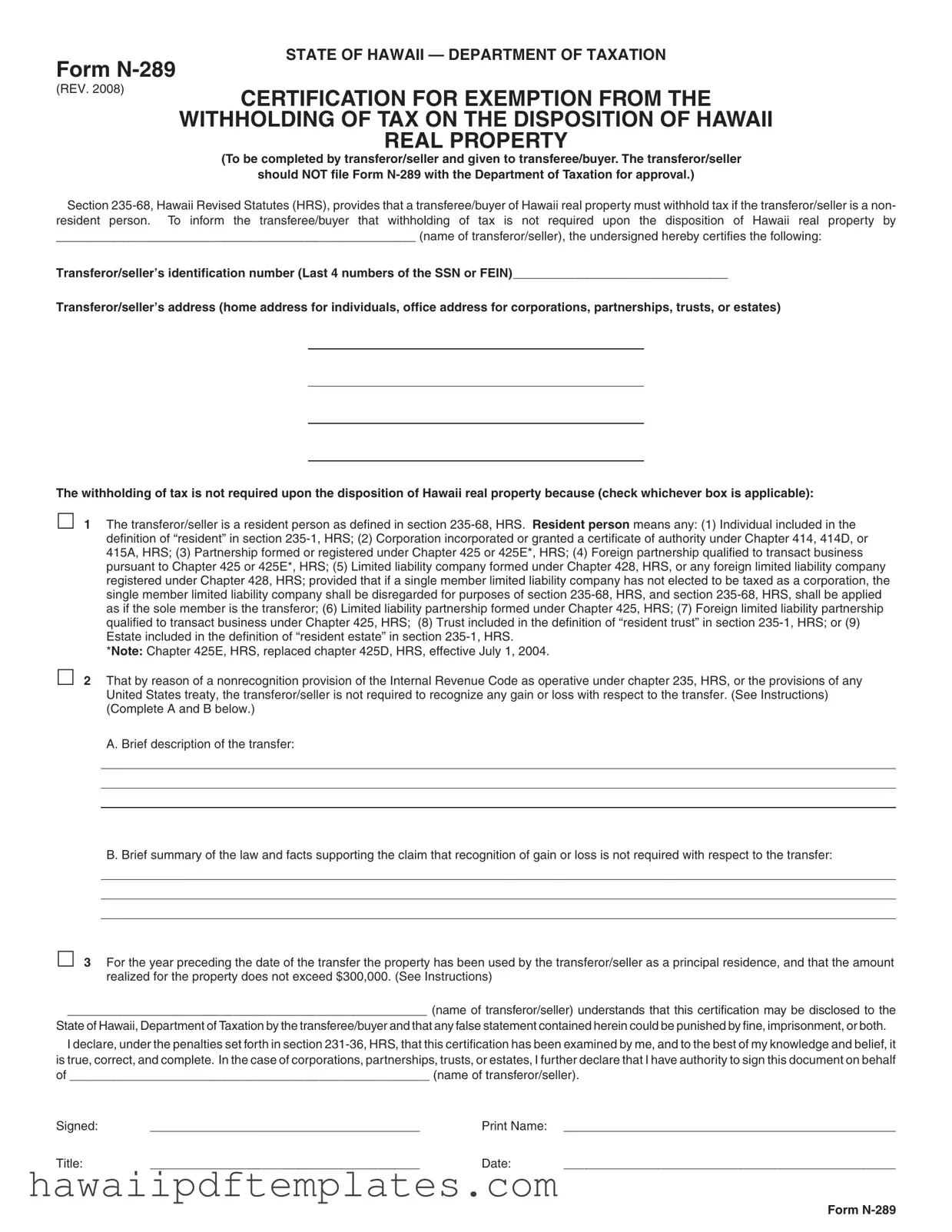Hawaii N 289 PDF Form
The Hawaii N-289 form is a certification used to inform buyers that the withholding of tax is not required when a property is sold by a resident seller. This form is essential for ensuring compliance with Hawaii tax laws regarding real estate transactions, particularly when the seller qualifies for an exemption. Understanding how to properly complete and utilize this form can help streamline the property transfer process.
Ready to fill out the Hawaii N-289 form? Click the button below to get started!
Customize Form Online
